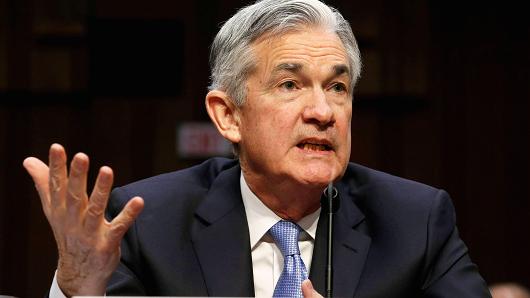
Joshua Roberts | Getty Images
Jerome Powell testifies before the Senate Banking, Housing and Urban Affairs Committee on his nomination to become chairman of the U.S. Federal Reserve in Washington, November 28, 2017.
Jerome Powell will take the helm as the 16th chairman of the Federal Reserve, after the Senate confirmed him for the position Tuesday.
The final vote was 85 to 12 in favor of confirmation.
Powell — known more casually as “Jay” — assumes the top Fed position following his nomination by President Donald Trump in November. He comes to the position amid a critical time for the Fed, which is normalizing policy after years of extraordinary accommodation triggered by the financial crisis.
Though he was confirmed Tuesday, he likely won’t officially assume his duties until Janet Yellen’s term expires in February. Yellen has said she will leave the Fed after Powell is sworn in, though her term does not expire until Jan. 31, 2024.
Where Fed chairmen tend to be economists, Powell comes to his position with a more markets-based background, particularly in venture capital. Previous stints included time at the Carlyle Group, Severn Capital Partners and the Global Environmental Fund.
In addition, he spent time at the Treasury Department and most recently, before coming to the Fed in 2012, served as a visiting scholar at the Bipartisan Policy Center think tank.
His policy positions are mostly expected to run at least close to Yellen, though some of his comments indicate he may be a bit more hawkish on monetary policy — that is, inclined to raise rates — and somewhat looser on bank regulation, particularly as it pertains to community and regional banks.
Those views will be critical in forging the road ahead.
The Fed has begun a long and cautious road back to policy normalization, with five interest rate hikes since December 2015. In addition, central bank officials have indicated that three more increases likely are on the way in 2018, a view the market recently has adapted as well.
Along with the rate hikes comes a reduction in the Fed’s balance sheet — a $4.5 trillion portfolio of mostly Treasurys and mortgage-backed securities, the great majority of which were acquired in three rounds of bond buying called quantitative easing. The Fed embarked on the program in an effort to pull down borrowing rates and, indirectly or not, drive investors into riskier assets like stocks and corporate bonds.
The Fed currently is allowing a capped level of proceeds from the bonds to run off each month, with a top level of $50 billion in a year. Some market participants have speculated that if inflation starts running hotter that a Powell Fed might get more aggressive with the balance sheet reduction.
Powell’s term runs for four years. Yellen is the first Fed chair since G. William Miller during the Jimmy Carter administration to serve less than two terms.
 EU News Digest Latest News & Updates
EU News Digest Latest News & Updates



